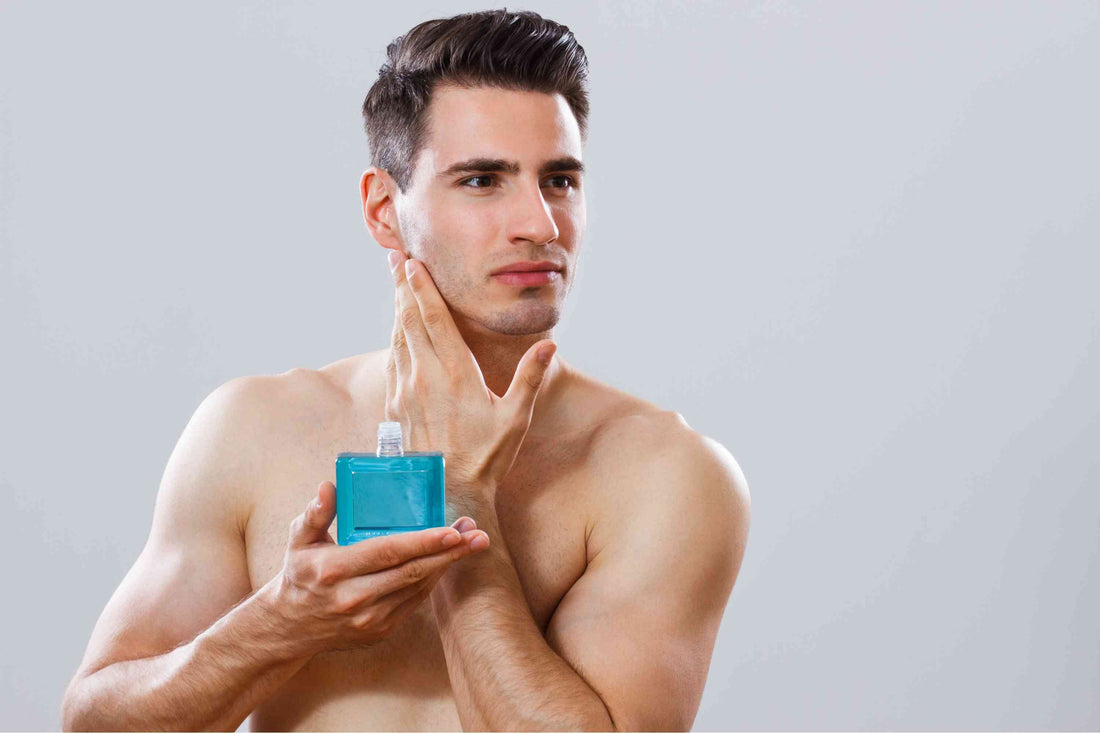
Aftershave: A Journey through History, Usage and Alternatives
Share
Aftershave – a term we encounter in everyday life, yet its origins and purposes often remain shrouded in the mist of ignorance. In this blog post, we delve into the world of aftershave, exploring its origins, its uses, and even some alternatives.
Origin and History of Aftershave
The history of aftershave stretches far back, to the times of ancient Egyptians and Romans. Even then, the importance of fragrances and essential oils for skin care and well-being was recognized. However, aftershave in its present form did not yet exist.
The term "aftershave" itself emerged later, probably in the 18th century. Originally, it was used to soothe skin irritations after shaving and leave a pleasant scent. During this time, aftershaves were often alcohol-based and contained essential oils such as lavender or rosemary.
The Use of Aftershave: Why Do I Need It Anyway?
Today, aftershave still serves to soothe skin irritations after shaving and to nourish the skin. Most aftershaves contain soothing ingredients such as witch hazel or chamomile, which can reduce redness and irritation. Additionally, the alcoholic component helps to close the pores, preventing the penetration of dirt and bacteria and protecting the skin from infections.
Another reason to use aftershave is the pleasant scent it leaves behind. Many people appreciate the fresh, masculine scent that a good aftershave imparts. It can also help to mask unpleasant odors and boost confidence.
Alternatives to Traditional Aftershave: Beard Oil and More
In recent years, alternatives to traditional aftershave have become increasingly popular. One of these is beard oil. Beard oil offers many of the same benefits as aftershave, including soothing the skin and preventing irritation. However, it contains less alcohol and may therefore be better suited for people with sensitive skin. Moreover, it helps to soften and smooth the beard, giving it a healthy shine.
Another alternative is aftershave balm or lotion. These products are often alcohol-free and contain moisturizing ingredients such as aloe vera or glycerin, which nourish and hydrate the skin.
Ingredients of Aftershave
The ingredients of aftershave can vary depending on the brand and product, but some common components include:
- Alcohol: Helps to disinfect the pores and tighten the skin.
- Essential Oils: Provide a pleasant scent and may have soothing properties.
- Witch Hazel: Acts as an anti-inflammatory and helps to reduce redness.
- Glycerin: Moisturizes and keeps the skin hydrated.
- Menthol: Has a cooling effect and can relieve itching.
It is important to check the ingredients, especially if you have sensitive skin or are allergic to certain substances.
Conclusion
While aftershave may be a simple product, its history and versatility make it an essential part of many men's grooming routines. From the ancient world to modern times, it has proven to be an effective way to soothe and nourish the skin after shaving. However, alternatives such as beard oil offer similar benefits and may be the better choice depending on your skin type and preferences. Whatever product you choose, make sure it meets your needs and keeps your skin healthy and well-groomed.
